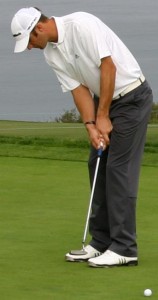Yesterday, the NHL Board of Governors decided to scrap the 4-on-4 five-minute overtime in favour of a 3-on-3 overtime in the event of a tie at the end of 60 minutes of play. They wanted this change implemented because not enough games were being decided in the 4-on-4 overtime period, and the ensuing shootouts were seen less as a confirmation of a win by a team, but more as a show of single players’ skills. So with only three skaters aside, there will be a lot more ice freedom, the reasoning goes, with more opportunities for breakaways, which should result in an overtime period goal, not relying on a shootout to decide the game.
The NHL Players Association feels this is a victory for the players, and, on the side of safety, that appears to be true. With more ice available to the players, there will be less time – or opportunity – for hits that could result in injuries. As for the game, though, it’s another change that doesn’t address the real problem of NHL hockey: an ice surface that is too small for the size, skill and speed of the modern day players.
To put it into perspective, let’s look at golf

Thirty-five years ago, in 1980, the PGA Tour began keeping stats on driving distances. That year, the man leading the PGA Tour was Dan Pohl, who, over 96 rounds of golf averaged 274.3 yard drives to be the driving distance leader. Pohl, now 60, won two PGA Tour events and also played on the Champions tour.
Pohl may have been at the top of the heap, but down in the 175th last place on the list was Michael Brannan, driving 238.7 yards over 88 rounds. In the middle, in 84th place, was Lanny Wadkins at 257.1 yards over 90 rounds.
Fast forward to the end of last weekend’s U.S. Open, a USGA event. Leading the field in driving distance in 2015 is the 115th U.S. Open’s runner-up, Dustin Johnson, averaging 317.6 yards over 47 rounds. Dustin’s monster drives are an average of 43.3 yards longer than what Pohl was able to produce 35 years ago. In last place (199th) this year is Mike Weir, averaging 259.9 yards over 33 rounds, 21.2 yards longer than Brannan. In the middle, in 100th spot, is Henrik Stenson, at 288.5 yards over 35 rounds, 31.4 yards longer than Wadkins.
To make it easier to visualize, here is a chart:
| Year | Longest | Shortest | Middle |
| 1980 | 274.3 | 238.7 | 257.1 |
| 2015 | 317.6 | 259.9 | 288.5 |
| Difference | +43.3 | +21.2 | +31.4 |
| Change | 15.7% | 8.8% | 12.2% |
Not just longer drives
Driving distance isn’t the only stat that’s increased, it’s the size of the tracks the professionals now play on. In 1980, for example, the Masters course in Augusta, Georgia played 6,905 yards. Once again, fast forwarding to 2015, the Masters course is 7,435 yards – a 7 percent increase. In 1980, the U.S. Open was played on the Lower Course of the Baltusrol Golf Club, a 7,013 yard monster in Springfield, NJ. The length that year was unusually long, even for a U.S. Open – the following year, the U.S. Open played at the Merion Golf Club in Ardmore, Pennsylvania with a distance of only 6,544. Last weekend’s U.S. Open at Chambers Bay in University Place, Washington played, at its longest for the tournament, 7,695 yards – a 9 percent change over Baltusrol, and a 17 percent change over Merion.
In golf and in hockey, great strides have been made in equipment. In golf, clubs are manufactured to not just give better distance, but better accuracy, and the balls have improved to aid in distance and give the player better feel on the putting green. In hockey, since the 1980’s, wooden sticks have been abandoned for composite carbon fiber, which gives players a shot with feel, flex, improved accuracy and less weight.
The NHL should keep the game as it should be played, 5-on-5, even in overtime. Instead, they should increase the rink surfaces to the larger international standard, adding another 15 feet to the width of the rink, with dimensions of 200 x 100 instead of 200 x 85 feet. This will make hockey a more open game from the very first puck drop, allowing the quick, skilled players to better navigate the ice with fewer obstacles. A bigger surface just might make the necessity of overtime play an occasional addition, not a common one as we saw in the 2014-15 season.